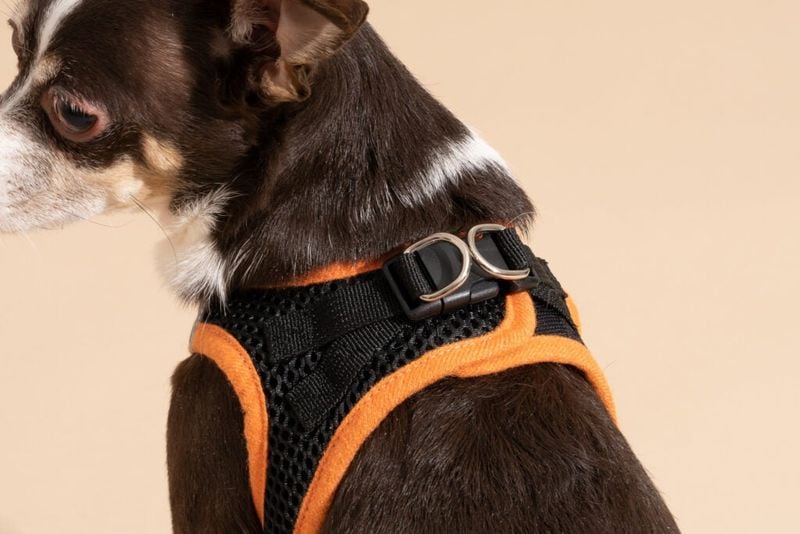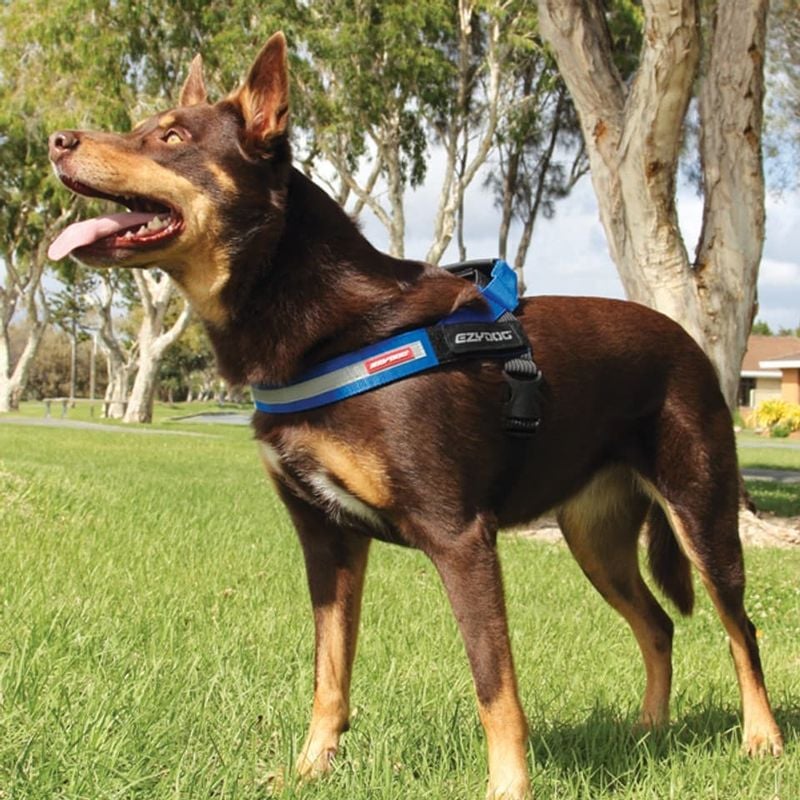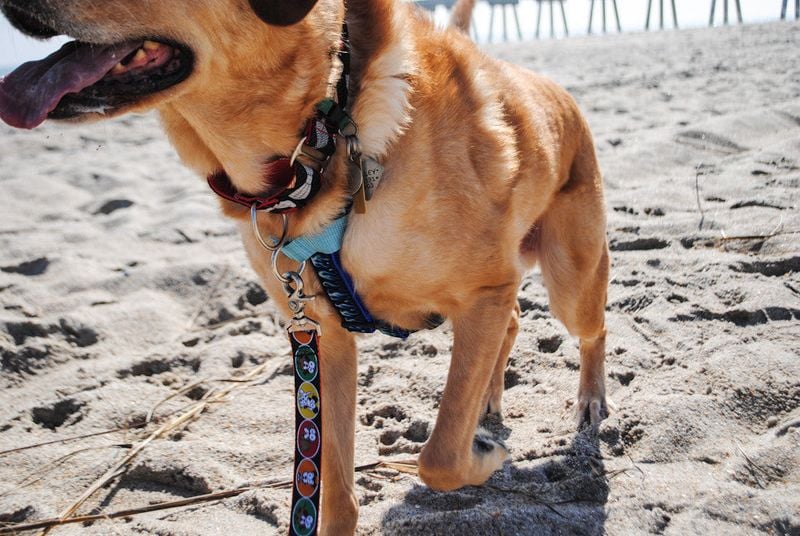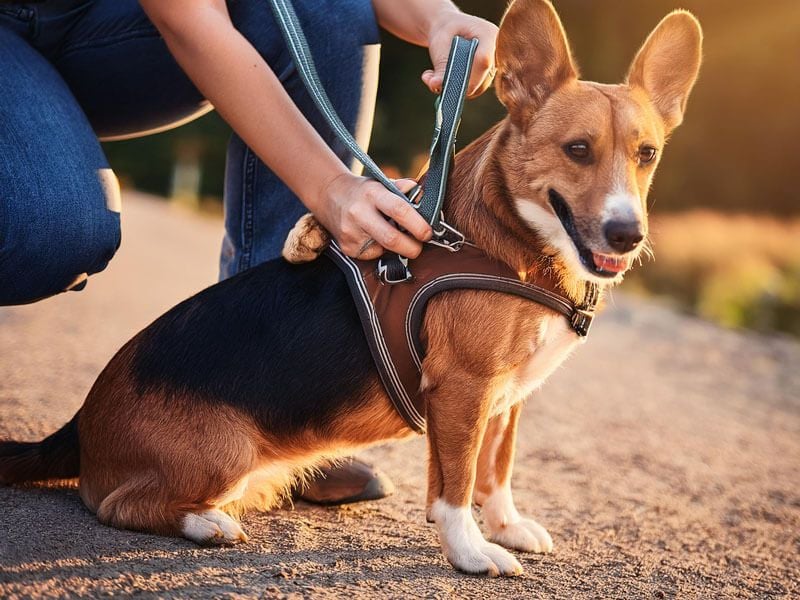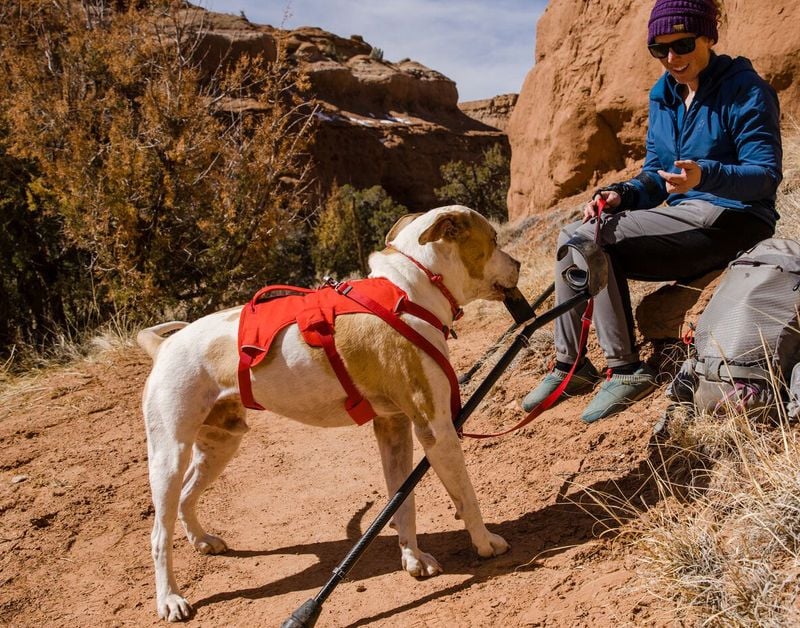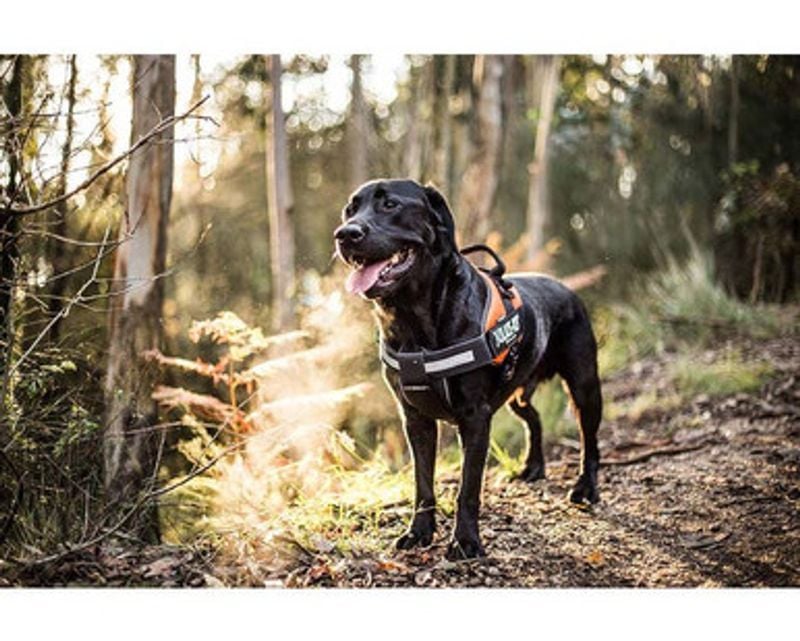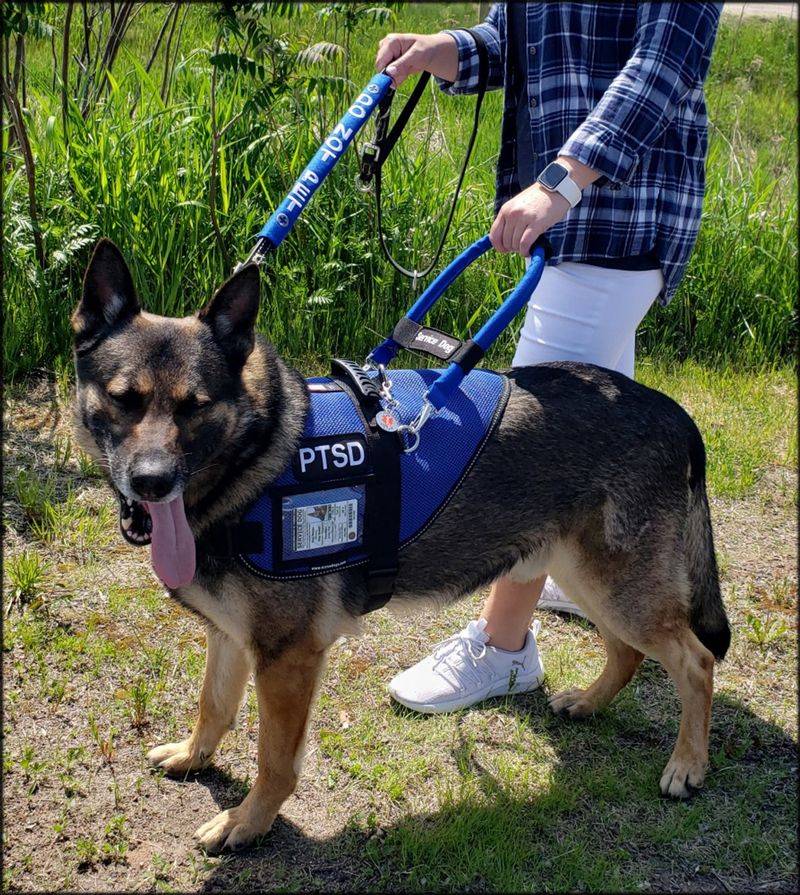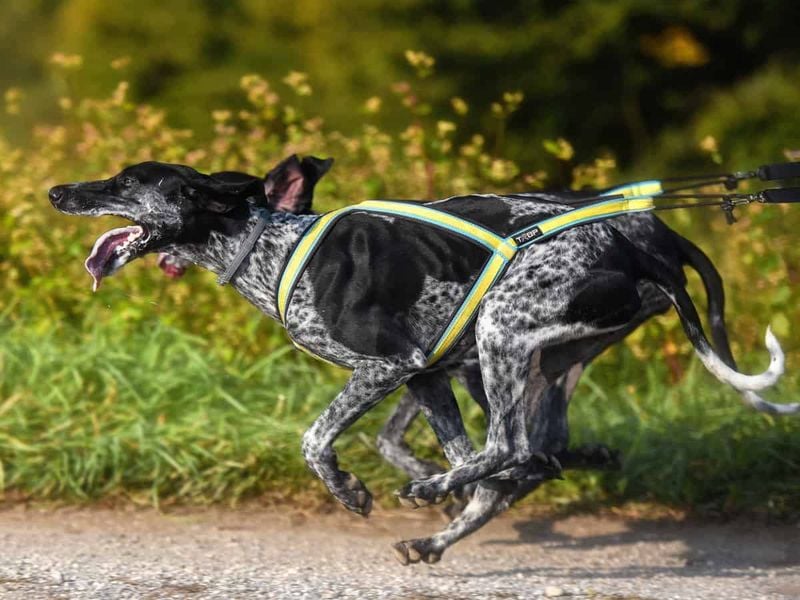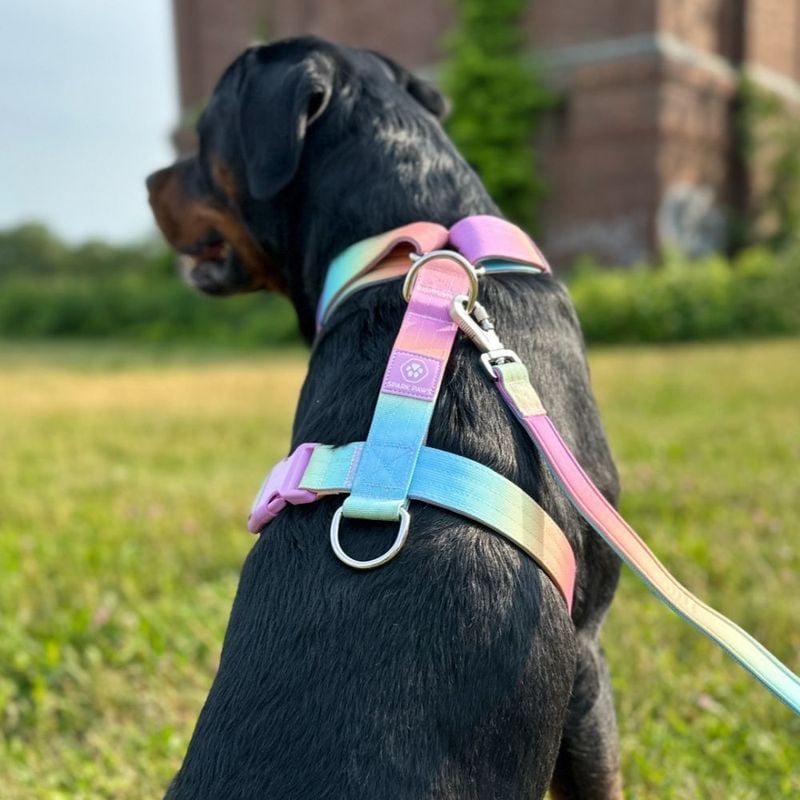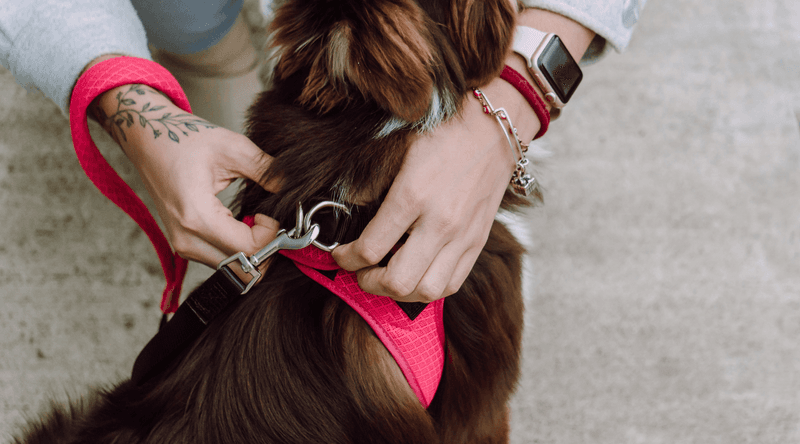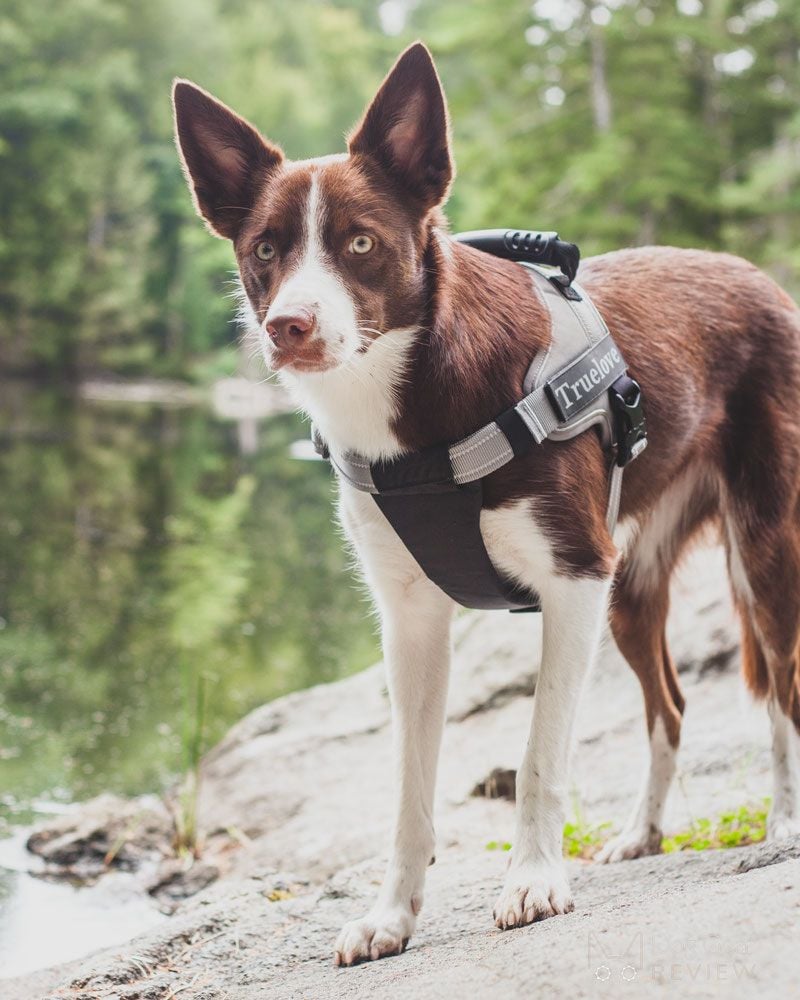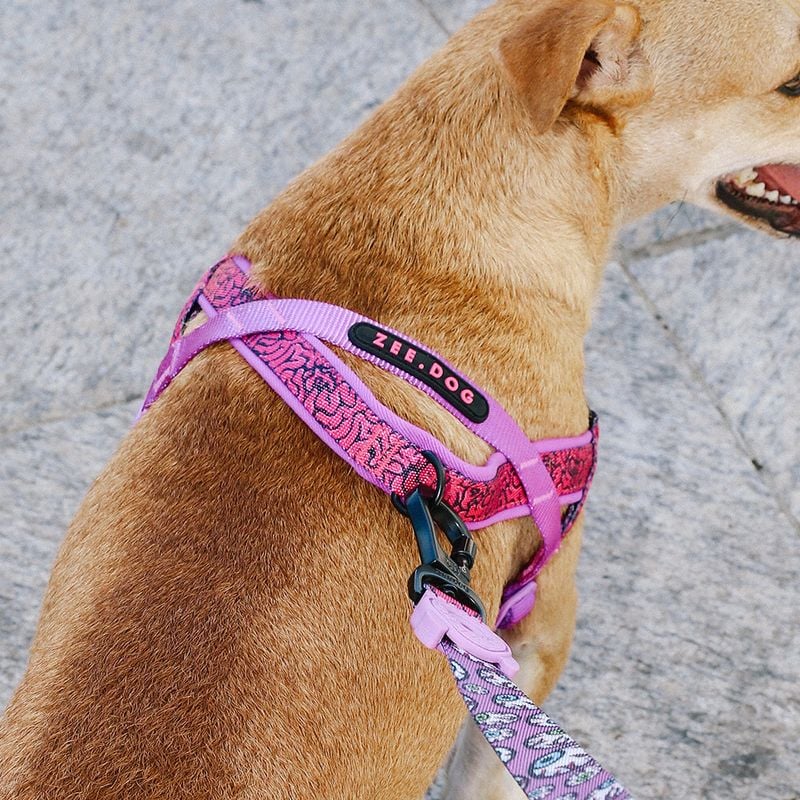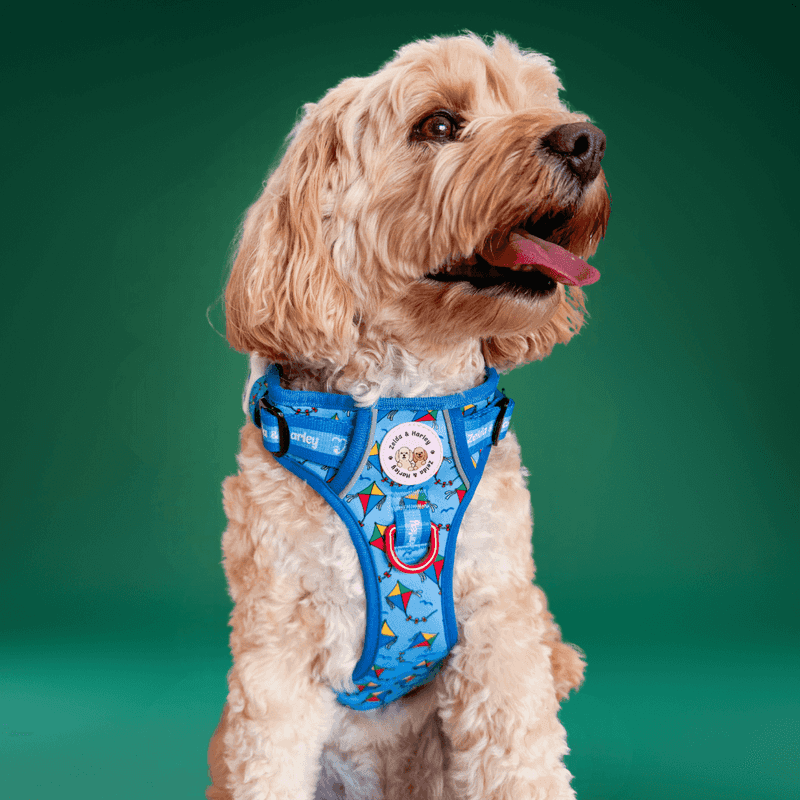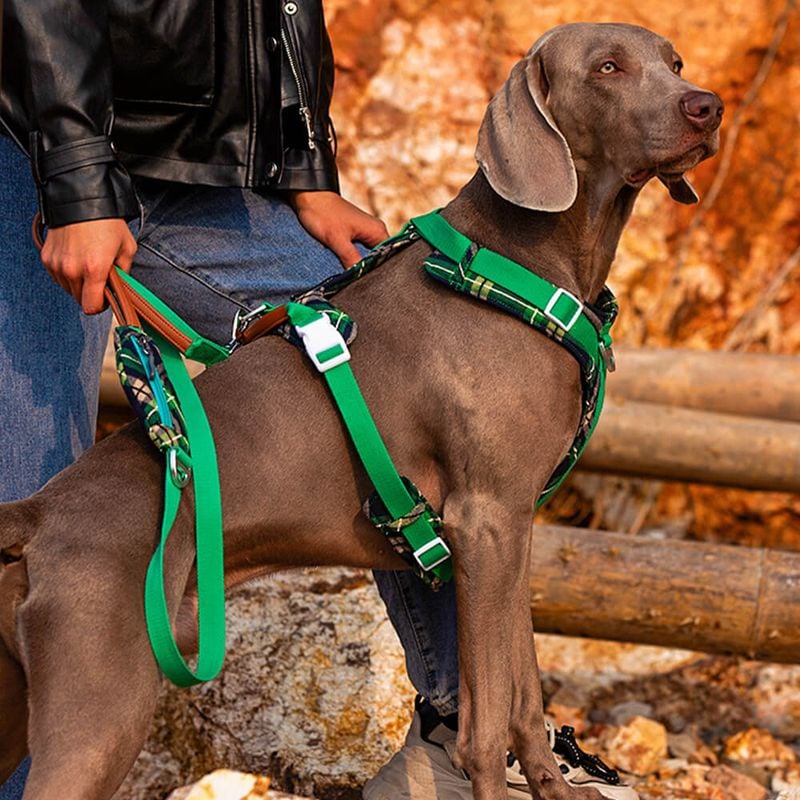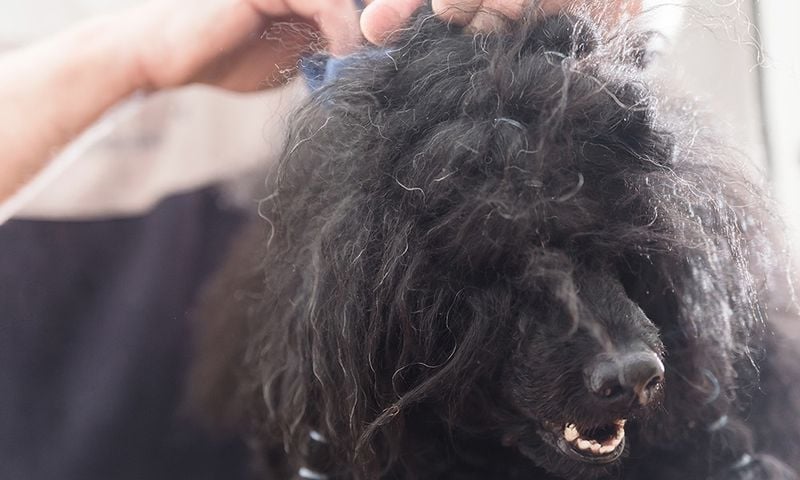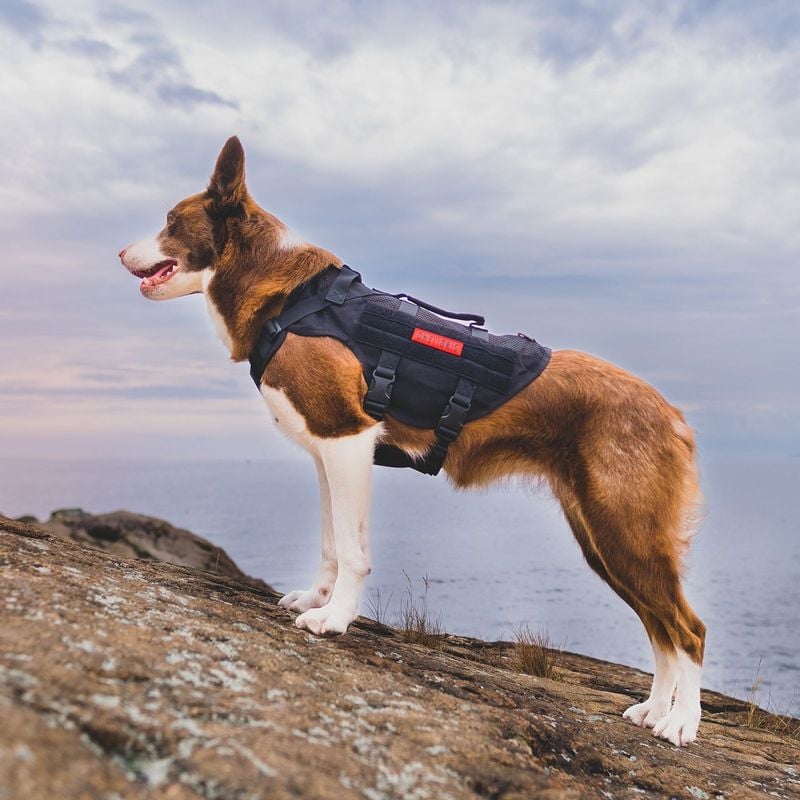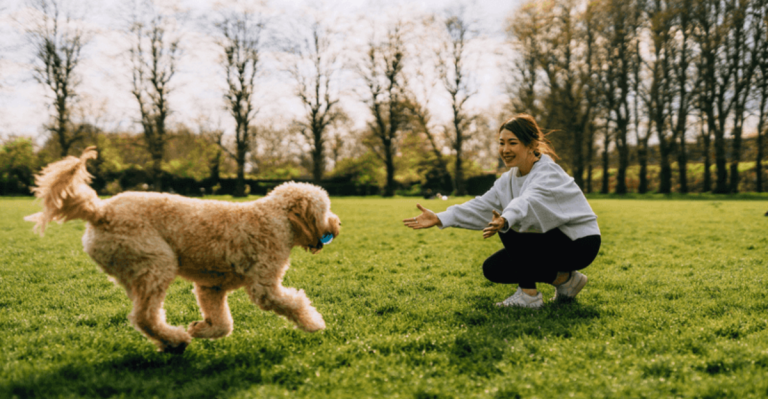Pro Trainer Shares Their 10 Pros and 10 Cons of Dog Harnesses
Dog harnesses have become a go-to tool for many pet parents, from casual walkers to those training excitable puppies or large, strong breeds. But are they always the better choice over a traditional collar?
According to seasoned dog trainers, harnesses come with their own set of perks—and a few drawbacks you might not expect.
Whether you’re looking to curb pulling, assist an aging dog, or protect a sensitive neck, understanding both sides of the harness debate can help you make the best decision for your pup’s health and behavior.
Below, a professional trainer shares ten honest pros and cons that every dog owner should consider before buckling up.
1. Reduces Strain on the Neck
One of the standout benefits of using a harness is the relief it offers to a dog’s neck and throat. Unlike collars, which apply concentrated pressure on the trachea during pulling, a well-fitted harness distributes that force more evenly across the chest and shoulders.
This is especially helpful for smaller breeds or dogs with delicate necks, like Chihuahuas or toy poodles, who are more vulnerable to tracheal collapse. It’s also a safer choice for brachycephalic breeds whose breathing is already compromised.
Even if your dog only pulls occasionally, using a harness can minimize long-term strain and potential injury to the neck muscles and windpipe.
2. Improves Control for Training
Walking an energetic or reactive dog becomes significantly easier when you have more control over their movement. Harnesses give trainers better leverage, especially when dealing with dogs that lunge, zigzag, or get distracted easily.
Unlike collars, which can cause a dog to spin or twist dangerously, a harness offers a secure, centered point of guidance. This makes it easier to communicate direction changes and rewards clearly, which is vital for leash training.
Trainers often recommend harnesses when teaching basic commands like “heel” or for dogs still learning polite walking manners. It’s a game-changer for consistency and safety during training walks.
3. Discourages Pulling (with Front-Clip Designs)
Harnesses designed with a front clip attachment can drastically reduce how much a dog pulls. Instead of reinforcing forward momentum like a back-clip harness might, the front-clip design redirects the dog’s movement toward the side.
This gentle redirection nudges them back to the handler, discouraging forward lunging. Over time, many dogs learn to walk calmly beside their owner without feeling restricted or punished.
Trainers often pair these harnesses with reward-based training methods to reinforce good leash behavior. For owners battling daily tug-of-war routines, the front-clip harness can feel like a miracle fix.
4. Safe for Dogs with Respiratory Issues
Some breeds already struggle to breathe, and collars can make that worse. Dogs with respiratory issues—especially flat-faced breeds like Pugs, Bulldogs, or Shih Tzus—benefit greatly from harnesses that don’t put pressure on their airways.
When a dog pants or gets excited, a collar can compress the trachea, leading to coughing, wheezing, or even panic. A harness keeps the throat area clear, reducing the chance of flare-ups or distress during walks.
For dogs recovering from throat surgery, illness, or with naturally restricted breathing, a properly fitted harness provides peace of mind and lets them enjoy their walk safely.
5. Harder to Slip Out Of
Certain dogs seem like escape artists, slipping out of collars without breaking a sweat. A harness can help prevent these great escapes by securing the dog at multiple points.
Many styles wrap around both the chest and behind the front legs, creating less wiggle room and a more secure fit. This makes them especially helpful for anxious or newly adopted dogs who might panic and flee.
When properly adjusted, harnesses are far less likely to slide over a dog’s head. For owners of Houdini hounds, the right harness brings welcome peace of mind.
6. Distributes Pressure Evenly
Applying pressure to one small area of the neck can cause pain or injury, especially for dogs that pull hard. A harness spreads that force across the dog’s chest and shoulders, making walks safer and more comfortable.
This even distribution is particularly important for large breeds or dogs in training, where sudden lunges could otherwise strain delicate muscles or cause long-term issues. It also reduces the chance of choking.
Many trainers prefer harnesses for this reason alone—it’s a simple way to protect your dog’s body while maintaining full control. For growing puppies, this can prevent injury during formative months.
7. Helpful for Mobility Assistance
Harnesses aren’t just about walks—they can be a lifeline for dogs with mobility challenges. Senior dogs, those recovering from surgery, or pups with disabilities benefit from the added support a harness provides.
Some models come with built-in handles, allowing owners to gently lift dogs into the car, up stairs, or off slippery surfaces. This gives the dog dignity and reduces risk of further injury.
For large breeds prone to hip issues or degenerative conditions, a mobility-friendly harness can significantly improve quality of life. It’s also easier on the owner’s back than lifting unassisted.
8. Reduces Risk of Eye Damage
Dogs prone to eye conditions—like those with bulging eyes or a history of glaucoma—need extra care during leash walks. Pressure from a collar can increase eye pressure, which may worsen these conditions.
Switching to a harness helps by eliminating that direct neck tension. The chest area becomes the point of control, which protects both the throat and the eyes from excessive strain during tugs or corrections.
This small change can make a big difference, especially for breeds like Pekingese, Shih Tzus, and Boston Terriers. It’s a preventative step that many eye specialists recommend.
9. Supports Dog Sports & Activities
Harnesses are essential for many outdoor activities beyond the standard walk. Whether your dog is into hiking, canicross, agility, or search and rescue, a well-designed harness enhances performance and safety.
It allows full range of movement while keeping your dog secure. Some even come with added features like reflective strips, hydration packs, or padded handles for obstacle support.
Using the right harness for these sports helps prevent injury and boosts your dog’s confidence as they work. It’s a tool for both recreation and protection in high-energy environments.
10. Better for Flat-Faced Breeds
Brachycephalic dogs come with adorable faces—and major breathing limitations. Collars can worsen these issues by putting pressure on the windpipe, especially when the dog pulls or gets overly excited.
Harnesses help avoid those risks by shifting pressure away from the neck. This reduces the chance of airway collapse and allows better airflow during daily activities or summer strolls.
For breeds like French Bulldogs or Pugs, the right harness is more than a convenience—it’s a health necessity. It allows them to be active without compromising their already limited respiratory system.
11. Can Encourage Pulling (Back-Clip Types)
While harnesses are often praised for controlling pulling, the back-clip style can actually make things worse if not used correctly. For some dogs, it creates a sensation similar to a sled dog’s gear—inviting them to lean in and pull harder.
Without proper training, this setup can reinforce bad habits rather than correct them. Owners may unintentionally reward pulling because the harness doesn’t create tension or discomfort like a collar would.
For dogs that already have strong leash manners, it’s not a concern. But if your dog is a determined tugger, you’ll want to choose a front-clip harness or use it with a training plan.
12. Takes More Time to Put On
Clipping a collar takes seconds. A harness, on the other hand, can feel like a mini puzzle—especially for first-timers or dogs that don’t like being handled. You’ll often need to adjust multiple straps.
Wiggly dogs may resist the process, particularly if they’ve associated the harness with a stressful situation or simply find it uncomfortable. Putting it on becomes a battle rather than part of a fun routine.
With practice, it gets easier, but the learning curve can be frustrating. For owners juggling tight schedules or impatient dogs, that extra minute can feel like a major hassle.
13. Incorrect Fit Can Cause Chafing
Harnesses need to fit just right—too loose and they slip, too tight and they rub. When they aren’t adjusted properly, friction points can form under the legs, across the chest, or behind the shoulders.
This is especially true for short-haired dogs or those with sensitive skin. What starts as a little redness can quickly turn into painful sores if unnoticed during daily walks.
Some dogs might also chew at the harness when it feels uncomfortable, damaging the gear and reinforcing negative associations. Proper fit and routine checks are essential to avoid irritation.
14. May Restrict Shoulder Movement
Not all harnesses are designed with natural movement in mind. Some wrap tightly across the shoulders or chest in ways that prevent a full stride—impacting gait, posture, and long-term joint health.
This restriction can be subtle at first but may lead to muscle imbalances or orthopedic issues over time. Active dogs, in particular, need gear that supports their athleticism rather than hinders it.
Trainers recommend testing movement while walking and watching for signs of stiffness or shortened steps. Harnesses should always allow your dog to move freely and comfortably.
15. Not Ideal for Off-Leash ID Tags
If you rely solely on a harness, you might forget it’s not always worn around the house or off-leash. That can leave your dog without ID tags during playtime in the yard or quiet moments indoors.
Unlike collars, which many dogs wear all the time, harnesses are typically removed when not in use. If your dog slips away during one of those unguarded moments, they could be missing vital identification.
Most trainers suggest combining a harness with a lightweight collar that holds tags. It’s a simple precaution that could make all the difference in an emergency.
16. Heavier and Bulkier Than Collars
Harnesses can feel awkward and heavy, especially for small dogs or breeds with delicate frames. Even lightweight versions add bulk around the chest and back, which may be uncomfortable during longer wear.
This extra material can also trap heat, making some dogs reluctant to wear it during hot weather. In colder climates, it may interfere with coats or sweaters needed for warmth.
While many dogs adapt quickly, others resist the unfamiliar weight or sensation. Owners may need to gradually desensitize sensitive pups to the feeling of wearing gear around their bodies.
17. False Sense of Security
Some owners assume that just having a harness on solves the problem—whether that’s pulling, lunging, or general leash manners. But even the best harness isn’t a substitute for consistent training.
Without addressing the underlying behaviors, the gear becomes a crutch. The dog may still act out, and the handler may feel frustrated when the harness alone doesn’t “fix” the issue.
Trainers stress that harnesses are tools—not magic solutions. They work best when used alongside clear commands, positive reinforcement, and a commitment to practice.
18. Can Tangle or Catch in Bushes
All that extra material and coverage has a downside in the great outdoors. Harnesses are more likely than collars to get snagged on branches, brush, or fence corners during hikes or yard play.
For adventurous dogs who love diving into bushes or squeezing through tight spaces, this can be a serious inconvenience—or even a safety hazard if they panic while stuck.
Owners should keep a close eye on fit and activity, especially with bulky or multi-strap harnesses. Outdoor-safe models with streamlined profiles are often better suited for off-path exploration.
19. May Cause Matting in Long-Haired Dogs
Thick or curly coats and harnesses don’t always play nice together. Repeated rubbing in the same spot can lead to knots, tangles, or tight mats in areas like the armpits and chest.
If not addressed quickly, these mats can become painful and hard to remove, even for groomers. Harnesses left on too long without grooming breaks are a recipe for discomfort.
Regular brushing and periodic harness-free time help prevent buildup. For dogs with dense coats, opt for harnesses made of smoother, padded materials that reduce friction.
20. Dogs Might Resist at First
Introducing a harness can trigger confusion or anxiety, especially in dogs unfamiliar with the gear. Some freeze, back away, or struggle when you try to put it on—making the walk stressful before it begins.
Negative reactions often stem from bad experiences, discomfort, or simply not knowing what to expect. Rushing the process only reinforces that fear, making the harness feel like punishment.
Trainers recommend slow desensitization—letting your dog sniff, touch, and eventually wear the harness in calm environments with plenty of treats. Patience pays off in long-term comfort and confidence.

